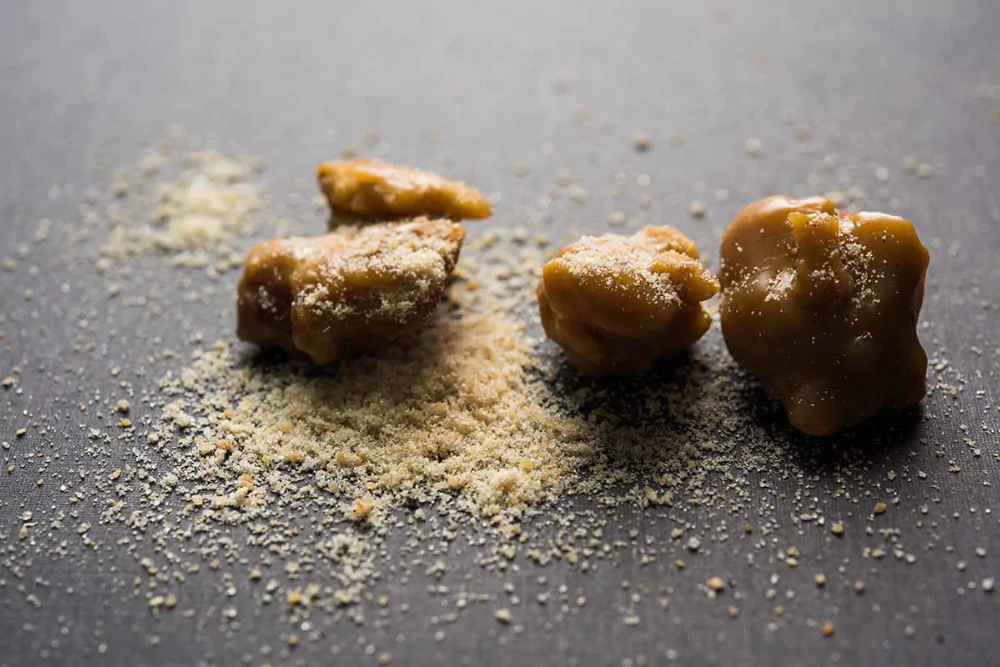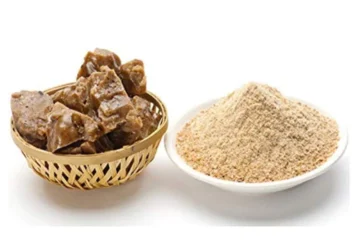Asafoetida, also known as Hing, has a powerful, sulfur-like smell — but it’s also a super spice loaded with health benefits. This blog explores why it smells so bad, yet works so well.
1. Why does the asafoetida plant smell so strong — is it due to a specific compound?
Short Answer: Asafoetida smells strong due to sulfur-rich compounds like ferulic acid and disulfides present in its gum resin.
Long Answer:
- Rich in Sulfur Compounds: Asafoetida contains organosulfur compounds similar to those in garlic and onions, which emit a pungent smell.
- Ferulic Acid Content: The gum resin in the plant holds ferulic acid and various disulfides that contribute to its sharp, lingering odour.
- Natural Plant Defense: These compounds are part of the plant’s natural defense mechanism against insects and predators.
- Released When Dried: The unpleasant smell intensifies as the resin dries and oxidizes, especially during processing.
- Enhanced by Heat: When cooked or tempered, the initial odour releases more strongly, though it mellows quickly.
2. If it smells unpleasant, why is asafoetida used so widely in cooking and remedies?
Short Answer: Despite its smell, asafoetida is valued for improving digestion, reducing bloating, and adding depth to vegetarian dishes.
Long Answer:
- Promotes Digestion: Asafoetida stimulates bile flow and digestive enzymes, making it ideal for relieving gas and indigestion.
- Natural Antimicrobial: It has antifungal, antiviral, and antibacterial properties, which make it a traditional remedy.
- Balances Flavours: In small quantities, it adds umami and enhances flavours, especially in lentil-based Indian dishes.
- Meat Substitute: It gives a savoury punch to vegetarian cooking that mimics the richness of meat or onions.
- Ayurvedic Use: Ayurveda has used hing for centuries to calm Vata dosha, which is responsible for air-related imbalances like bloating.
3. Does the pungent smell indicate stronger medicinal properties?
Short Answer: Yes, the stronger the smell, the higher the concentration of bioactive compounds with therapeutic effects.
Long Answer:
- High Sulfur Equals High Potency: The foul smell comes from sulfur-rich compounds that also hold the most health benefits.
- Indicative of Antioxidant Levels: Strong-smelling varieties usually have more antioxidants and volatile oils.
- Correlated with Ayurvedic Strength: In Ayurveda, stronger-smelling hing is seen as more powerful in treating digestive disorders.
- Modern Backing: Research confirms that compounds responsible for the smell are also responsible for antibacterial and anti-inflammatory properties.
- Natural Detoxifier: Its pungency helps remove toxins (Ama) from the body according to Ayurvedic principles.
4. Can the smell be reduced while still getting the health benefits?
Short Answer: Yes, tempering asafoetida in hot oil reduces its smell while retaining its therapeutic and flavourful properties.
Long Answer:
- Tempering Method: Heat hing in ghee or oil for 5–10 seconds before adding other ingredients to mellow the aroma.
- Mix with Other Spices: Combine hing with cumin, turmeric, or ginger to mask the smell and balance the dish.
- Use in Minimal Quantities: Even a pinch is enough; using too much makes the dish overly pungent.
- Opt for Compound Hing: Many store-bought varieties are blended with flour, which dilutes the sharp smell naturally.
- Store Properly: Keep in an airtight container to prevent the smell from contaminating other spices.
5. Are there other spices or ingredients that smell bad but are good for health?
Short Answer: Yes, several strong-smelling foods like garlic, onion, and fermented products are extremely healthy.
Long Answer:
| Ingredient | Smell Description | Health Benefits |
|---|---|---|
| Garlic | Pungent, sulfuric | Reduces blood pressure, fights infections, supports immunity |
| Onion | Sharp, eye-watering | Rich in antioxidants, anti-inflammatory |
| Kimchi | Sour, fermented | Probiotic-rich, supports gut health |
| Natto (fermented soybeans) | Ammonia-like | High in Vitamin K2, boosts bone health |
| Durian | Rotten onion smell | Loaded with fibre, antioxidants, and healthy fats |
Conclusion
So, why does asafoetida smell bad? Because it’s packed with powerful sulfur compounds that may wrinkle your nose but heal your gut. Its offensive odour is the very reason it’s a culinary and medicinal staple across many cultures. From aiding digestion to fighting microbes, asafoetida’s health benefits far outweigh its smell. Just remember — temper it well, store it smartly, and enjoy its ancient wonders in modern meals.





